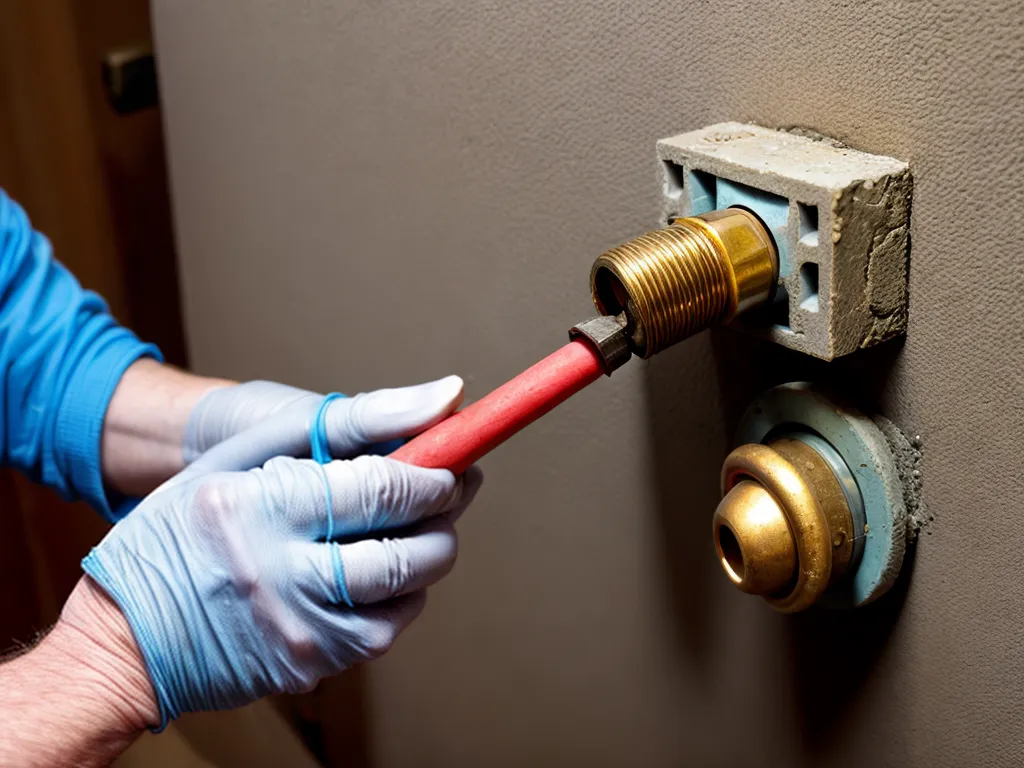
Knob and tube wiring was commonly used in homes built before 1950. This antiquated electrical system features wires that are suspended between porcelain knobs and run through porcelain tubes. While knob and tube wiring was suitable for the electrical needs of the past, it can be dangerous and insufficient for modern households. Replacing this outdated wiring is an essential safety measure.
Dangers of Knob and Tube Wiring
Knob and tube wiring poses several safety hazards:
-
The wiring lacks a ground wire, increasing the risk of electrical shocks and damage to connected devices. Without a ground wire, a short circuit can energize metal components and cause electrocution.
-
The old cloth-covered wires can deteriorate over time, creating potential fire hazards. Frayed or cracked insulation exposes the copper wiring and allows arcs, sparks, and overheating.
-
Knob and tube circuits are often overloaded as homes add more devices and appliances. This can lead to overheated wires and fire risks.
-
Old wiring and connections can come loose over time. This creates points of high resistance that can overheat and ignite fires within walls and attics.
Why You Should Replace Knob and Tube Wiring
Given the safety risks, it's crucial to replace knob and tube wiring. Here are some key reasons you should make this wiring update:
-
Reduce fire risks - Modern wiring is made of more robust thermoplastic insulation that does not easily deteriorate. Replacing old cloth-covered wires greatly reduces fire hazards.
-
Gain grounding and GFCIs - New wiring installation allows you to add proper grounding and GFCI outlets. These critical safety features prevent shocks and electrocution risks.
-
Increase capacity - Modern wiring enables your home's electrical system to handle the considerable power demands of modern devices and appliances. This reduces the risks of overloaded circuits.
-
Improve home value - Updating old wiring makes your home safer and more attractive to potential buyers. This wiring improvement can increase your home's resale value.
-
Qualify for insurance - Some insurance companies may refuse coverage or increase premiums for homes with knob and tube wiring due to the risks. Replacing this wiring may help gain coverage.
How to Replace Knob and Tube Wiring
Replacing knob and tube wiring is a project best left to licensed electricians. An expert can safely and effectively remove old wiring and install modern systems. Here is an overview of the process:
1. Hire a Licensed Electrician
Only hire a fully licensed, bonded, and insured electrician experienced with rewiring projects. Ensure they pull all required local permits. Verify they follow all applicable building codes.
2. Develop a Rewiring Plan
The electrician should evaluate your electrical needs and inspect the existing wiring. They will then develop a rewiring plan detailing all required updates, materials, costs, and timeline.
3. Inspect Attics and Walls
To access all old wiring, the electrician may need to cut holes in walls and ceilings. Make sure they contain dust and properly restore openings.
4. Remove Old Wiring
Knob and tube wiring is removed by disconnecting circuits, pulling wires out of tubes, removing porcelain knobs, and extracting wires from attics and walls. All old wiring is fully removed back to the electrical panel.
5. Install New Wiring System
The electrician runs all new wiring through walls and attics, installing boxes, circuits, switches, outlets, grounds, and other components according to electrical codes.
6. Add New Safety Features
Modern ground wires are connected. GFCI outlets are added to high-risk areas like kitchens and bathrooms. The panel is upgraded to breakers.
7. Patch and Restore Openings
After removing old wiring, the electrician will patch all holes and openings and repaint or restore finishes. All restoration is completed to match existing home decor.
8. Verify Proper Function
Thoroughly test all lights, switches, and outlets. Appliances and devices should operate properly without issues. The electrician obtains final inspection approval.
Cost to Replace Knob and Tube Wiring
The cost to replace knob and tube wiring often ranges from $3,000 to $8,000 or more depending on the size of your home. Key factors impacting total costs include:
- Amount of wiring that needs replacement
- Accessibility of wiring through walls and ceilings
- Need for repairs and restoration after installation
- Any electrical panel upgrades required
- Local electrician labor rates and material costs
While not cheap, the investment is worthwhile to keep your home and family safe. Some insurance companies also offer discounts after rewiring that can help offset costs.
Replacing antiquated knob and tube wiring is one of the best safety investments you can make for your home. Follow proper procedures and work with experienced electricians so the project goes smoothly. Your reward will be greatly reduced electrical and fire risks.